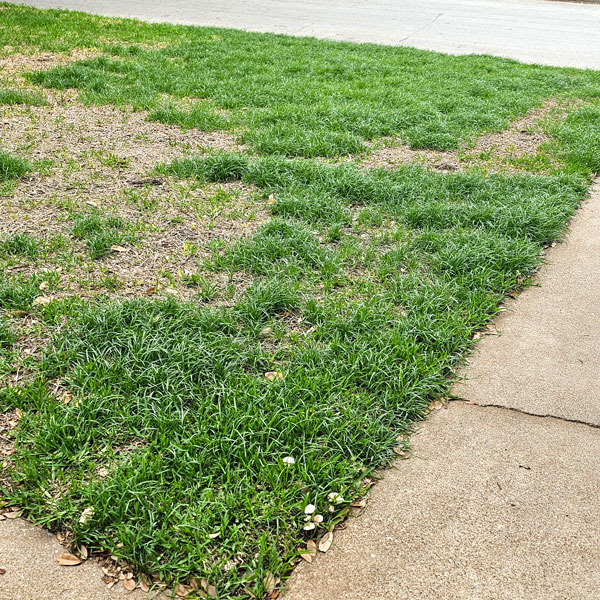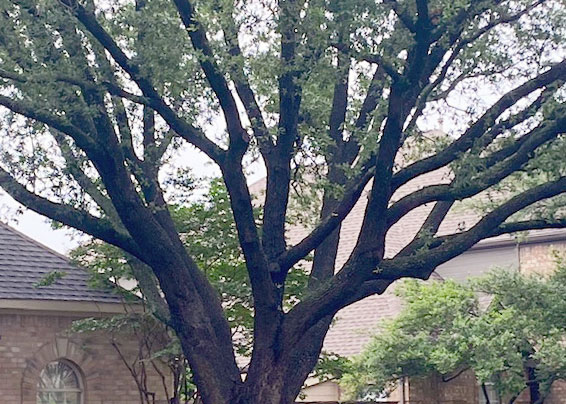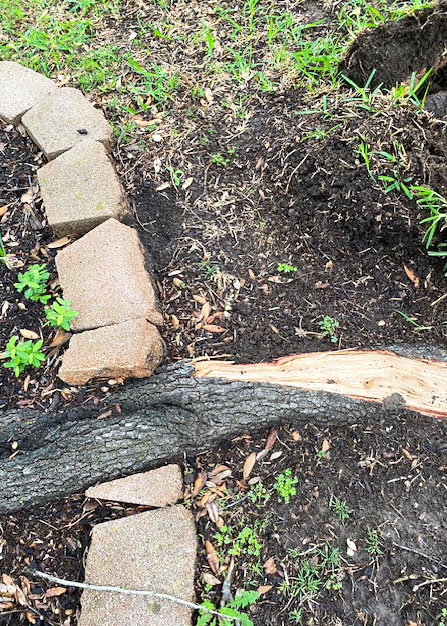Q&A – Ask Neil: May 8, 2025
(Please read these instructions carefully.)
Before you post your question, please look at recent issues to see if someone else has already asked it. You might find your answer there.
How to submit your question…
(Note: You may need to allow a pop-up window to come up in order to get the link for sending your photo(s). If you have already submitted your question and didn’t see the pop-up window, please click here.)
• Click the link provided below to post your question. After you submit your question, a new window will pop up giving you the address to which you can e-mail a SHARP, HIGH-RESOLUTION PHOTO to accompany your question. Please DO NOT SEND THUMBNAIL PHOTOS in case I need to zoom in to see things.
• Click here to post your question.
• Please ONLY POST YOUR QUESTION ONE TIME. We can only accept a set number of questions each week, and when we get duplicates it costs other people their chances.
• One question per reader, please.
• Please use this only for posting questions – not for standard emails.
• Watch for your answer in the following week’s e-gardens.
• I choose those of greatest general interest. For example, plant IDs seldom make the cut.
• I must have your first name or initials.
• I must have your city or county. (Texas is a very large state.)
QUESTION 1
WHAT SHOULD I DO WITH MY TEXAS REDBUD?
Question: My Texas redbud had a horrible fungus last year. This year its leaves are tiny, and it has new shoots growing up from the ground. Should I continue spraying with copper fungicide? How often? Rachael S., Pflugerville.

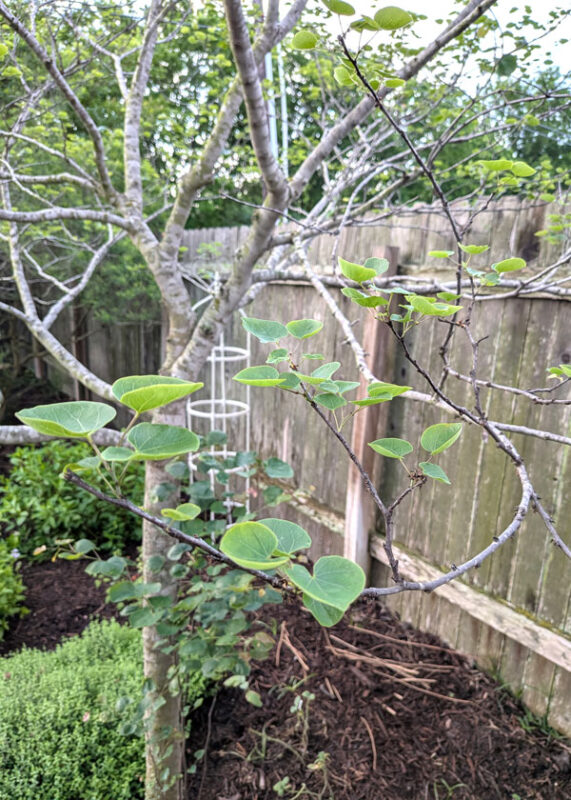
Answer: To the best I can see, the top of the tree is in great distress. I seriously doubt if it’s going to come back. Since most of its leaves appear to be gone entirely, apical dominance has been lost and the dormant buds at the bottom have been “directed” to grow. I don’t think anything will be gained by further spraying. Sit tight and watch. If the top continues in this condition, you will need to cut it back to a spot just above the sprouts. You can select one or more of them to become your new trunks. Texas redbuds are usually clump-form with multiple trunks. Honestly, the sprouts’ leaves look more like leaves of Texas redbud than the larger, apparently dull leaves of the mother tree. You may end up happier in the long run.
QUESTION 2
WHAT IS WRONG WITH MY SHUMARD RED OAK?
Question: I have an 11-year-old Shumard red oak that has been a great tree with no issues until this year. It did not leaf out at the ends of its branches and had two branches that did not leaf out at all. What is wrong? Loretta H., Hickory Creek, Denton County.
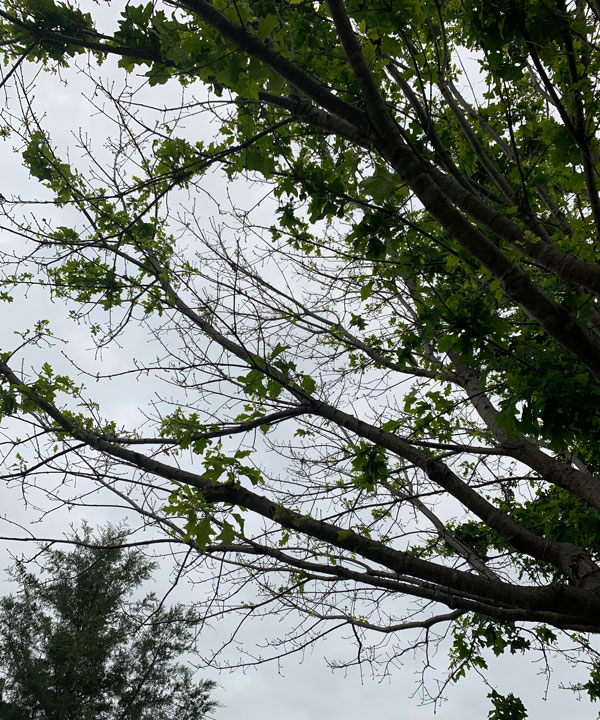
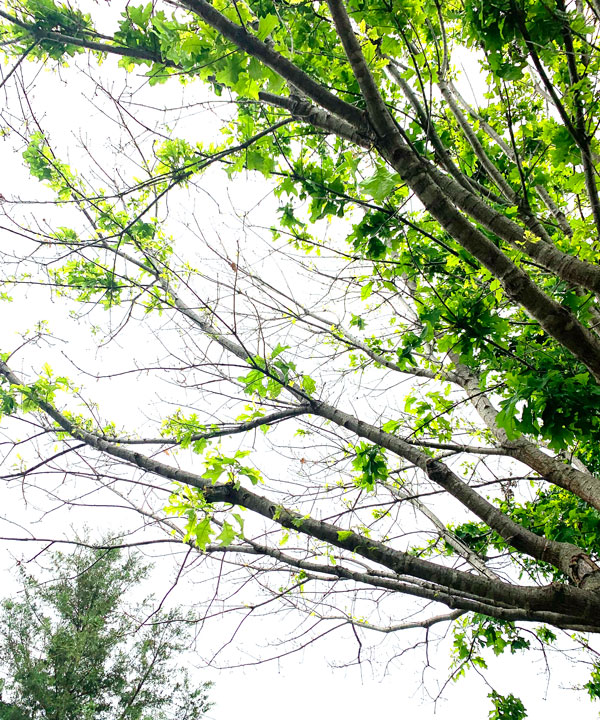
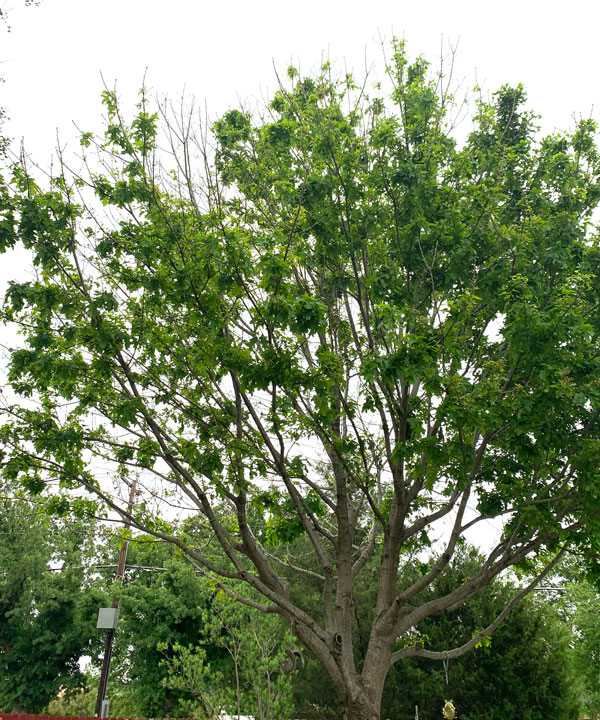
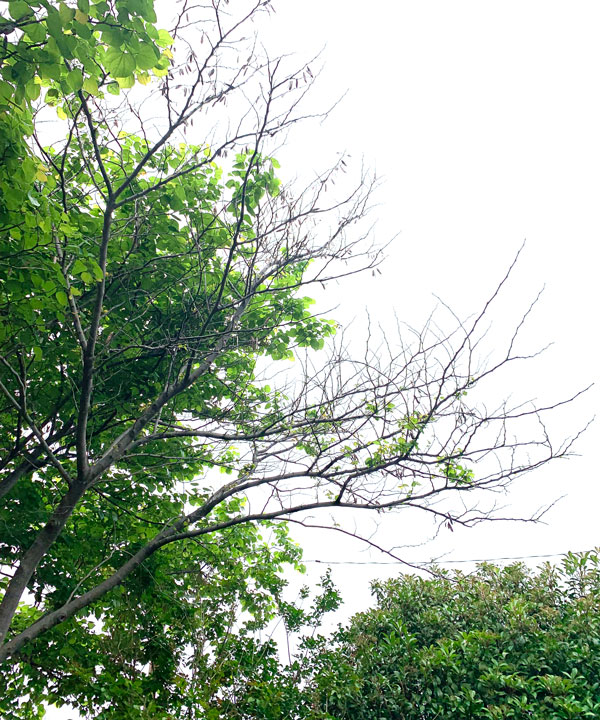
Answer: The photos were very dark. I left one of them in the exposure in which they all arrived. I then boosted exposure so I could make out their leaves. I was trying to see if these are indeed Shumard red oaks. You’ve probably seen me write on many occasions that oaks get sold as Shumards when they are, in reality, hybrids of pin oaks brought in from the Southeast. This dieback that you described and the way the branches look in your photos, is exactly how the mislabeled oaks end up reacting to Metroplex soils and with the alkaline water supplied from Metroplex reservoirs. Click here to see the answer I have on this question on the FAQ pages of my website.
If you think I’ve missed the boat, you might want to hire a certified arborist to look at your tree with you. However, if it ends up being iron deficiency, I encourage you to invest the funds in a new tree rather than spending a lot trying to correct iron chlorosis.
QUESTION 3
WILL MY NEWLY TRANSPLANTED MAGNOLIA RECOVER?
Question: This magnolia was transplanted in January and was doing great until the hail and rain came in March. It went into shock and lost its leaves. Should I wait to see if it comes back, or should I take it out and plant something else? Anita V, Granbury.

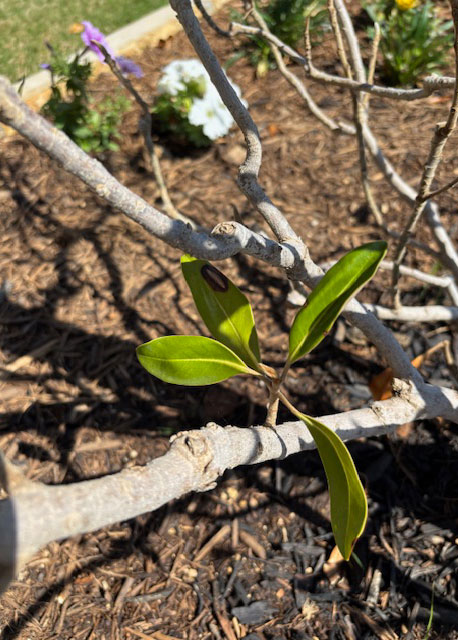
Answer: Replace it. Rain won’t hurt a magnolia, and I don’t see any evidence of damage from the hail on the tops of the branches. The loss of leaves is probably nothing more than transplant shock. It ran into the first signs of warm weather and started shedding leaves. I’d plant another tree in October so it can have the rest of the fall, all winter, and spring to get established before next summer.
QUESTION 4
HOW SHOULD I APPLY IMAGE TO CONTROL NUTSEDGE?
Question: Can you tell us how to apply Image to control nutsedge? I either have applied too much and killed an entire area or not enough and the nutsedge kept right on growing. Now it’s taking over. Help! Lock C., Grapevine.
Answer: I’d prefer not to get into telling readers how much product they should be including in their applications because percentage of active ingredients can vary from one package to another. There is too much chance of misunderstanding and misapplication. I always refer them directly to the legal product label that comes attached to it. (In this case, a small booklet.)
The product label will conspicuously tell you how many square feet it will cover. To get the correct rate of application you simply must make sure to apply it to that many square feet. Multiply length by width of your rectangular spaces to determine how many square feet you need to treat.
Next you must apply enough water to soak the herbicide into the soil. That’s why it doesn’t matter how much water you use initially to apply the Image to the area being covered.
And that’s it. Gradually the nutsedge should turn yellow and disappear. You’ll need to be patient. You will need to make a second application 4-6 weeks later. Both treatments should be made between May 15 and September 15. Following those directives, I’ve had very good results eliminating nutsedge from the Sperry home lawn and shrub beds. But I’ve never started with a population as dense as what you have.
QUESTION 5
WHAT SHOULD I DO TO PROTECT MY OAK’S ROOTS AS THE CITY REPAVES OUR SIDEWALKS?
Question: The city is repaving our sidewalks. They ripped out a very large root from our live oak by shredding it, not by cutting it. Will insects and fungus get into the root, or is there something I can do to stop it? Elizabeth K., Plano.
Answer: The root is exposed enough that you can easily make a fresh cut with a pruning saw a few inches inside the edging. (Don’t use a chain saw – contact with soil dulls them instantly.) Let the cut root air dry for a day or two, then apply pruning paint to the cut surface. It should be fine.
QUESTION 6
WHAT IS WRONG WITH MY PEACH TREES?
Question: I planted my peach tree one year ago. Now the leaves look unhealthy. What should I do? Justin J., Austin.
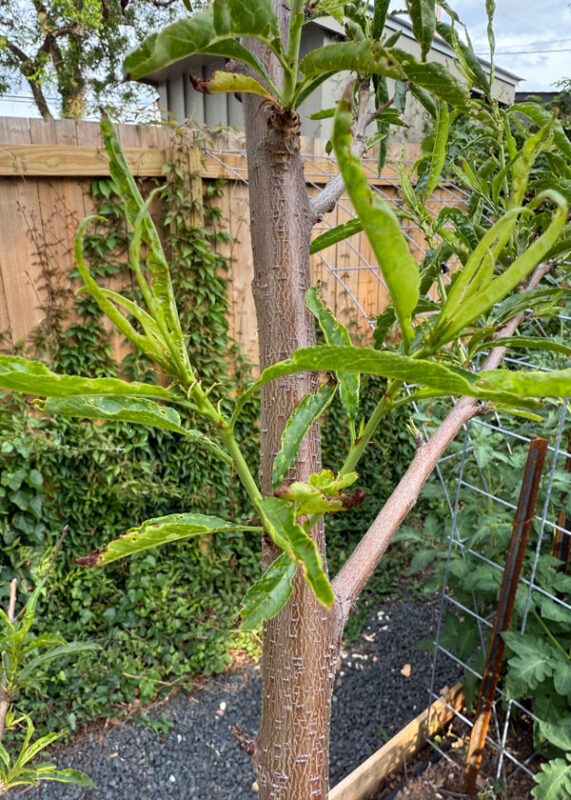
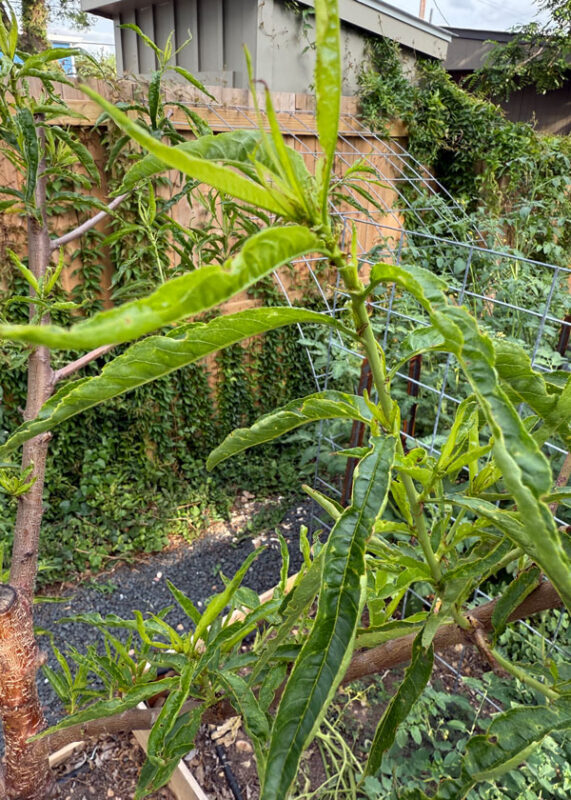
Answer: Peach leaf curl. It’s a relatively harmless fungal disease that attacks the newly developing leaves early in cool, moist springs. Control it with a fungicidal spray in fall. See this information from Penn State University.
Your outbreak is very minor compared to some you will see. Some are unrecognizable as being peach leaves.
QUESTION 7
WHAT IS HAPPENING TO OUR NANDINAS?
Question: We had three healthy nandinas, but now one has already died and the other two are struggling. Are they beyond hope? Gail H., Iola, Grimes County.
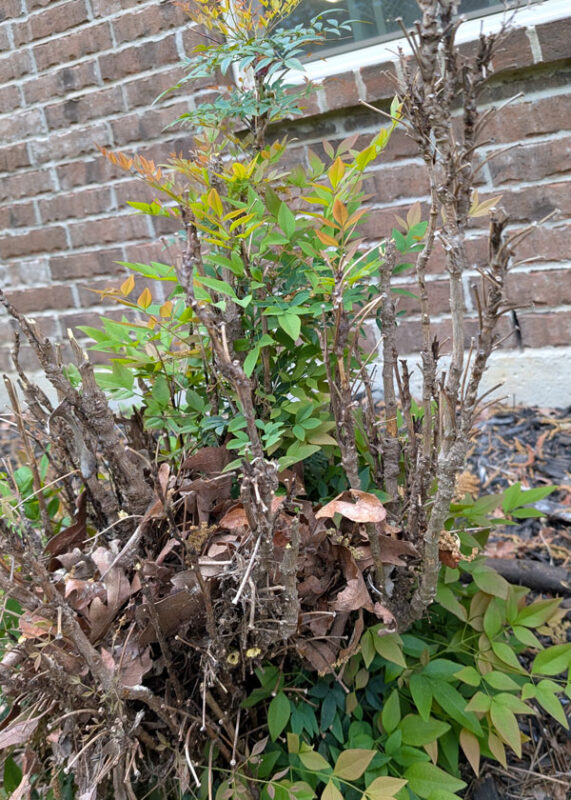
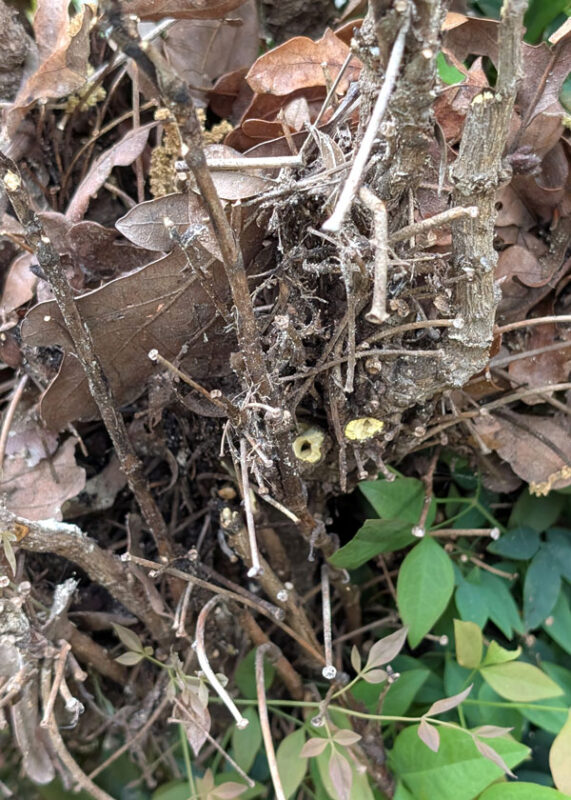
Answer: Judging from the closeup photo, this happened some time ago, perhaps even years. And judging from the more distant photo, I’m going to guess that that plant was pruned 16-24 inches from the ground, perhaps flat-topped. Enough time has passed that I really can’t tell. The stems are decaying. Nandinas should always be pruned by cutting the tallest canes completely to the ground. That will encourage vigorous new shoots to come up from the roots. If you prune them above ground, because they’re unable to send out vigorous new branches, the plants will become stunted and die. I think that’s what has happened. There would be nothing wrong with taking these old plants out, reworking the soil, and planting new nandinas to replace them. They’re great shrubs.

